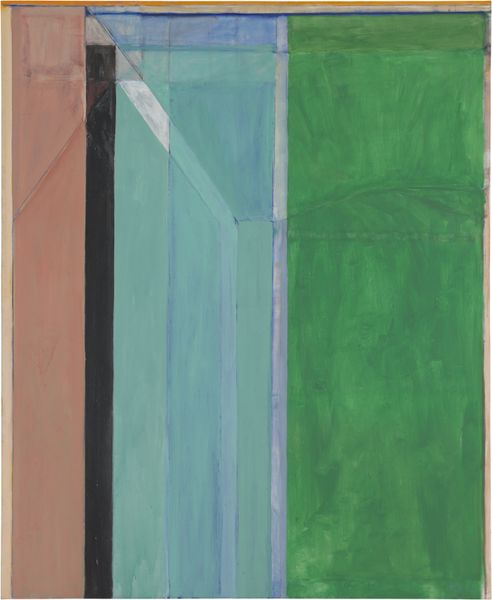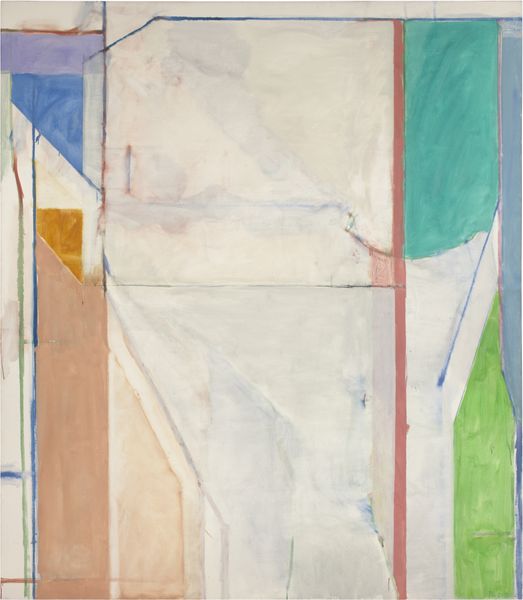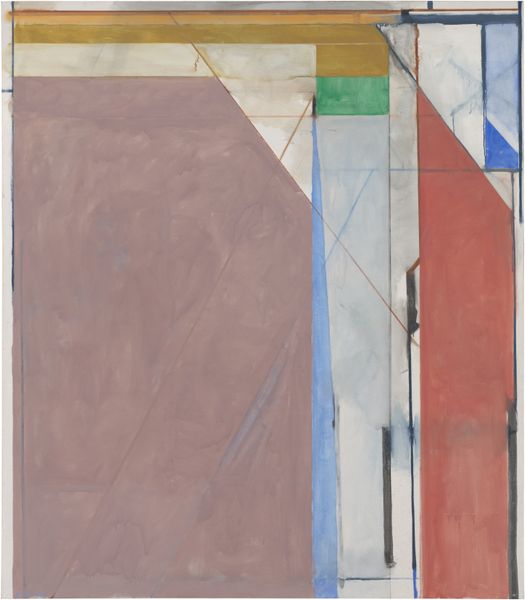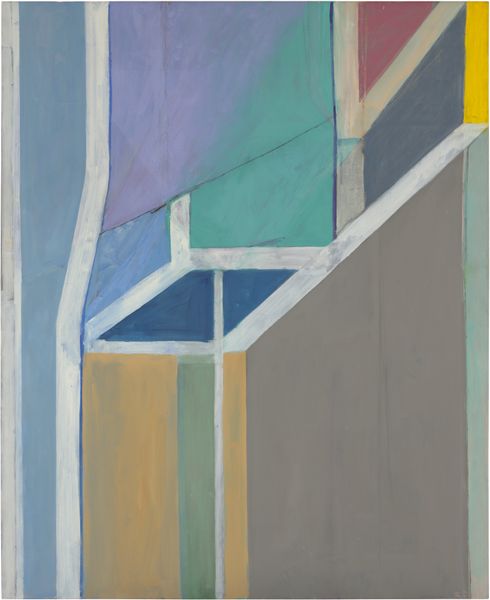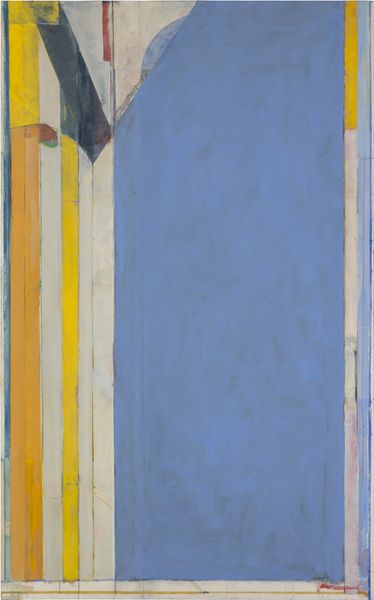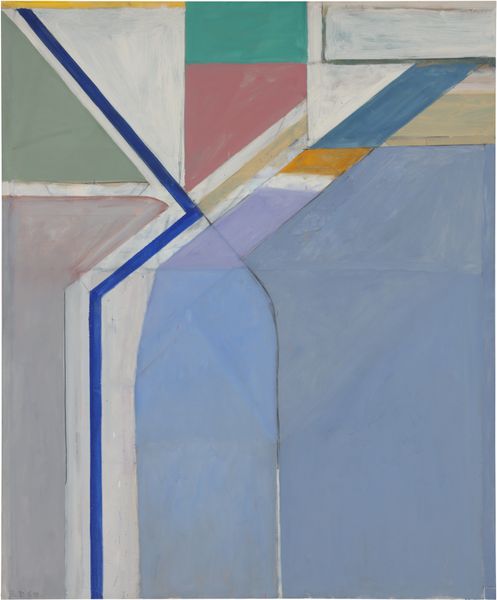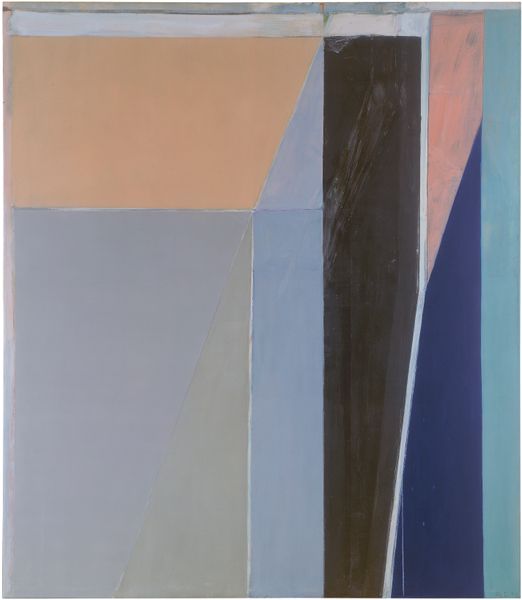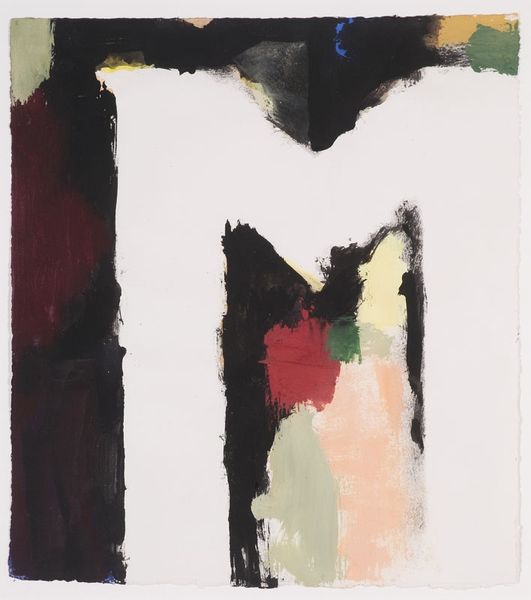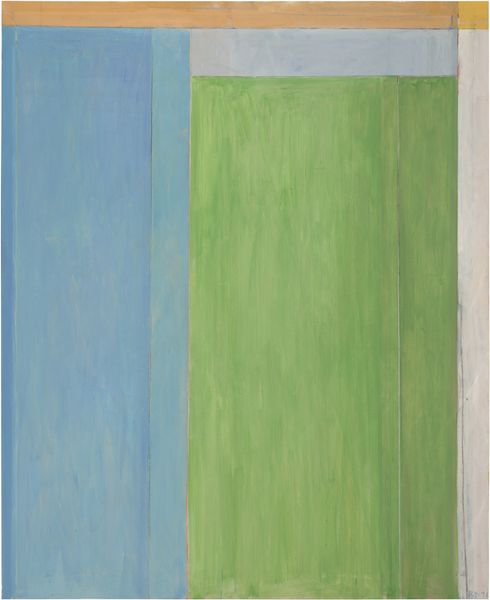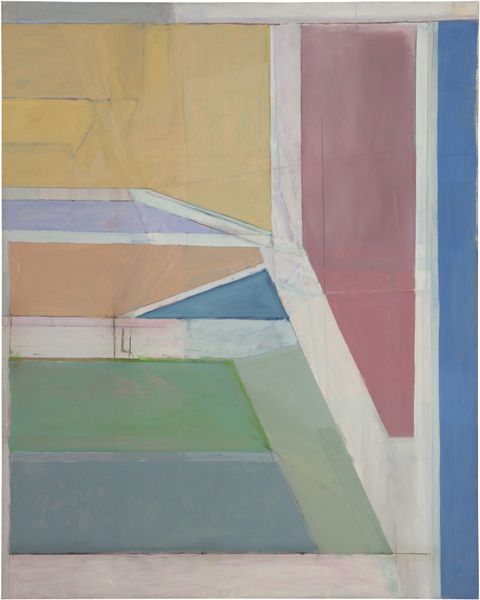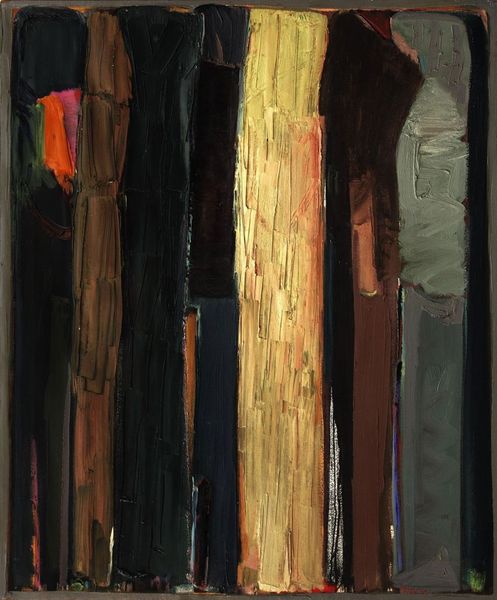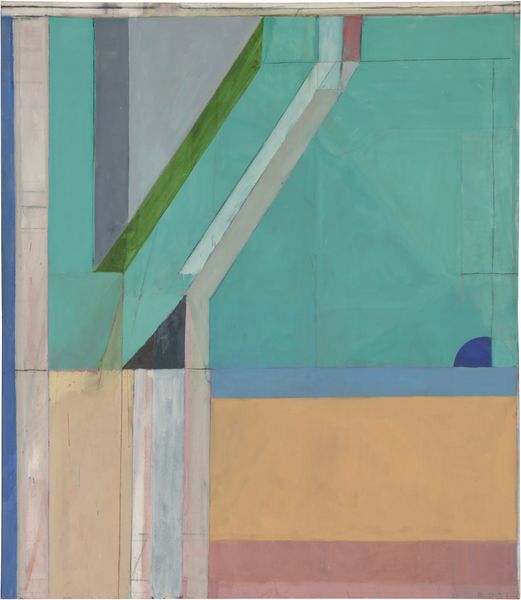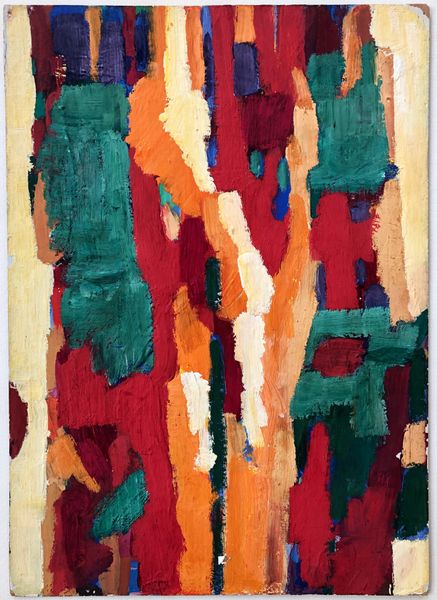
painting, oil-paint
#
abstract-expressionism
#
abstract painting
#
painting
#
oil-paint
#
oil painting
#
bay-area-figurative-movement
#
abstraction
#
line
#
modernism
Dimensions: 123.7 x 182.9 cm
Copyright: Richard Diebenkorn Foundation
Curator: Richard Diebenkorn's "Ocean Park #6," an oil on canvas completed in 1968, embodies the essence of abstract expressionism. Its lines and colors evoke a sense of place, even as it resists concrete representation. Editor: My first thought is calmness. It's soft. The colors create a quiet harmony, though I am curious how it connects to its title. The shapes don’t immediately bring the ocean to mind. Curator: Diebenkorn's "Ocean Park" series reflects his environment in Southern California. Think about the interplay between landscape and modernist artistic practices at the time. The series is very interested in mapping internal feelings over the land that holds them. It is a practice that resonates well into today as artists engage land art as part of ecological interventions. Editor: So, the Ocean Park neighborhood is more the subject than the sea itself? Is it less about pictorial representation and more about the sensation of being there? Perhaps even tracing out property lines and using that mapping as its base structure? The tones definitely soften what could be read as something far more hard edged. Curator: Exactly. His earlier works engaged more with pure abstract expressionism, however you see the beginnings of the incorporation of line appearing during his time in Albuquerque during the 1950s. Editor: I wonder if the perceived quietness and calm could also speak to a kind of privilege and access. California, especially in the late 60s, carried an allure for many people who could only imagine that lifestyle, especially those outside of the United States during the height of the Cold War. There's something idyllic here, but perhaps that idyllic quality has a cost, creating these sharp divisions of property you see laid out. Curator: I appreciate your point. And while it's interesting to discuss that critique, it is worthwhile noting how radical abstract art of this kind was when considering artistic traditions of social realism so commonly seen in socialist and communist nations. Even today, abstraction opens many doors to discuss concepts without risking censure in various regimes. Editor: I hadn't considered that aspect—abstraction as a subtle act of resistance within a specific socio-political framework. It’s easy to see now how limiting overt, figurative works are compared to the range of interpretive motion abstraction opens up. I can’t say I agree with abstract work on a daily basis, but its necessity within the history of representation is clear. Curator: I am in accord. The capacity of abstract work has immense impact when thinking of representation throughout art history, "Ocean Park #6" sits at an intriguing nexus. Editor: Absolutely, the politics of imagery indeed. A compelling reminder of the layers within even the seemingly serene.
Comments
No comments
Be the first to comment and join the conversation on the ultimate creative platform.
